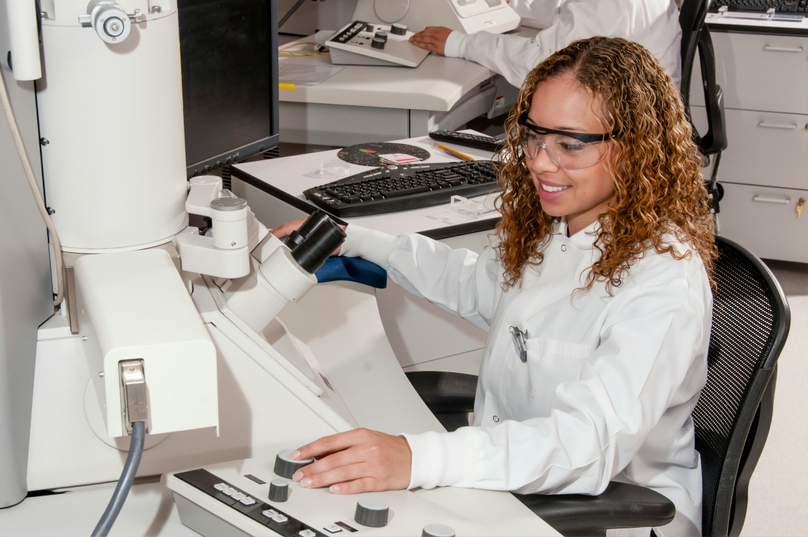Every researcher, historian and scientist know that data is the key to reliable results. If you have poor data management tools, you could be looking at setbacks that could take years to recover from. Here are four essential facts that should be at the forefront of your mind when it comes to protecting your research data.
Know Current Data Management Limitations
Depending on your organization, there are certain methods already set up to manage research data. This could be as simple as a shared folder on a server, or as complex as an entire data management suite. Find out how your data is protected, if it is stored off-site or on location, and who has access to files and information.
Examine Your Research Data Management Plan
Where your files are stored is only part of a Research Data Management (RDM) plan. You also need established rules for researchers to adhere to that ensure information is backed up regularly, and files are placed in the appropriate locations. With a good plan, everyone is on the same page and you will greatly reduce the possibility of lost data.
Utilize Software to Help Organize Data
Generally, initial RDM plans result in improvised and unsecured storage and retrieval. Using basic rules and basic equipment provides only the most basic of data safety. Programs like Genemod provide ways for students and instructors to exchange data and also provide backups and security to keep that data safe in case the worst happens.
Make Retrieval Easy for Research Data Analysis
Data is only useful if it can be accessed. Make sure your information is available to all those that need it, otherwise, you’re faced with not only constant pestering for access but the possibility of incorrect analysis. Effective RDM plans will allow for the free exchange of information as well as limit access to only those that need it.
Your research data is one of the most important aspects of your research. Contact Genemod today and make sure you have the right software to keep your data secure while providing your team with the tools you’ll need to get the best results!
What is Research Data Management
Research data management (or RDM) involves gathering, organizing, and maintaining information throughout each step of the research process. RDM also includes appropriate archiving of data once the project is complete. Thus, accessible data management needs to be an ongoing activity throughout the research lifecycle.
Having a data management plan in place is also essential for data sharing, in all formats, throughout your lab, and other labs or institutions. Data management plans can enable the reuse and exact reproduction of your experiments. Also, data curation throughout its lifecycle can help to ensure its own long-term availability.
The Research Data Lifecycle
The research data lifecycle model illustrates each stage of data management and highlights how information flows throughout a research project from beginning to end. It includes six main stages:
Step 1: Data Management Plan
A data management plan (DMP) is a document that outlines your strategy for managing data within the lab. It facilitates consistent data management throughout the information lifecycle. There are several important steps in the plan. These include:
Determination of the research funder requirements: Typically, each lab will develop its own protocol for the management and dissemination of data. You can save significant time at the outset by understanding the requirements set out by your research sponsor. Always bear in mind that your main objective is to create a plan that will optimize your project. This means that you can include more data than is originally required by your funding agencies so long as it is relevant for your research team.
Identify data to be gathered: Each step of your data management plan is dependent upon this one. Keeping an eye on data volume is important because of the personnel and infrastructure costs involved in managing data. Implementing a digital data management system can help with this.
Define how the data will be organized and managed: This is an area of data management that should evolve as the project evolves. Using a data management software solution will not only facilitate this, but it will also mean you don’t have to use multiple programs to generate and populate your data tables.
Explain data documentation: No matter how many data tables you present, they have little meaning without the relevant documentation explaining when, where, and how they were collected and interpreted. A LIMs can help you provide this documentation and make it easy to access and share from one main dashboard.
Explain quality assurance: Quality assurance and control are the two measures to ensure that you are compliant with lab standards and that you can improve the quality of your products or processes. These measures will stretch beyond research methods to incorporate training, verification tests, and instrument calibration. This data is invaluable for detecting errors and troubleshooting.
Create a safe storage strategy: One common mistake made by inexperienced and experienced lab managers alike is to assume that their personal computer or tablet will last indefinitely. This overconfidence causes them to forget to duplicate their data. Having a cloud-based data storage solution in place means that you don’t need to worry about lost data because the storage is safe and the data is backed up and accessible to all team members.
Describe data dissemination: You need to have a strategy in place for how and when a project’s data will be disseminated to others, particularly those who are outside of your research group.
Assign responsibilities: A comprehensive data management plan explains the roles and responsibilities of every member of the lab team who is working on the project. Roles may include data gathering, data entry, quality assessment and control, backup, data submission to storage, and systems administration.
Prepare a budget: Collating, managing, publishing, and sharing research data are all equally important parts of the process. Part of developing a data management program is to factor in the budget. Data administration takes time, and it’s important to remember that using a digital data management option can significantly cut your budget.
Step 2: Dataset Creation and Collection
Now you have your data management plan in place, it’s time to look at the different aspects of the process. Dataset creation and collection is an integral part of every original research project, but performing it manually lays you open to human error and can be very time-consuming. Having a digital curation center for your lab eliminates these issues. Other advantages include:
Increased productivity
Improved efficiency
Easy access and sharing
Safer storage
Step 3: Research Process
Each lab research experiment is conducted under highly rigorous conditions, ensuring accurate standards and measurements. For example, where and when the research takes place, which members of the team are participating, and which protocols are used. Managing your research data adequately allows for:
Manipulation of conditions
Control of variables
A safe environment
Accurate research output
Step 4: Dataset Analysis
Data management software allows you to analyze and compare different types of data with one overarching resource. This means there’s no need to go searching for data tables to compare or assess because they are already available in one common dashboard. Other advantages include:
Easy and effective validation
Optimum security compliance
Automated quality control workflows
Connection to external data sources
Step 5: Metadata Archiving
Digital lab information management systems facilitate the storage and tracking of metadata archives. This frees up time for the members of your lab team, allowing them to focus on new research projects. Other benefits include:
Easily search for identifiers
Simple formats and data archive
Elimination of lost data
Quick location of DOI (digital object identifier)
Step 6: Data Sharing
If you want to enhance your data-sharing capabilities, a lab management system is the way to go. Whether you’re sharing with a team member or a university library, or you want to implement open access or decide who gets to see the results of your research, a digital solution can provide both. It can also:
Improve communication with partners
Allow easy data sharing with sponsors
Ensure standards and protocols are being met
Streamline operations and reduce costs
Step 7: Data Reuse
These days, the best lab management systems go way beyond inventory management. They also have templates for data input, implementation, and sharing. This means that you can enjoy the benefits of reusable and consistent calculations and data sets. These include:
Consistent methodology
Easy reproducibility
Facilitates reuse
Extending the data curation lifecycle
Step 8: The Benefits of RDM
The benefits of RDM are easy to see. A LIMS facilitates and enhances every step of your data lifecycle from plan and design to access and reuse. Some of the other many benefits include:
Helps you fulfill funder requirements
Keeps you in line with publisher protocols
Saves time, resources, and money
Connects you to other data services
Creates safe data repositories
Protects your intellectual property
Facilitates data citation
Enhance Your Data Management in Research with Genemod
Good data management practices are vital for your lab. Gathering, maintaining, and storing all information manually can be costly and increase your risk of loss and error.
With a Genemod digital data management solution, your lab data processes will be optimized. Contact us today to find out more about how we can help you manage data efficiently!


















